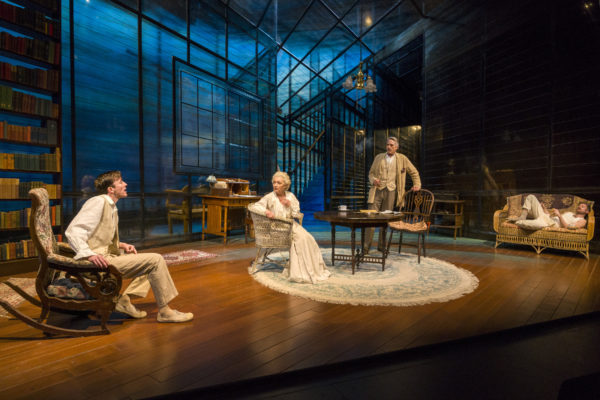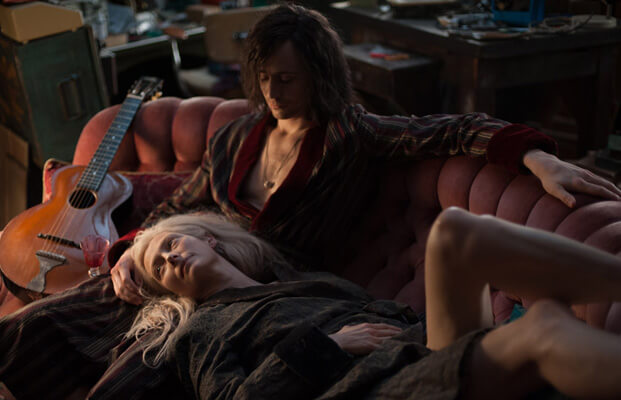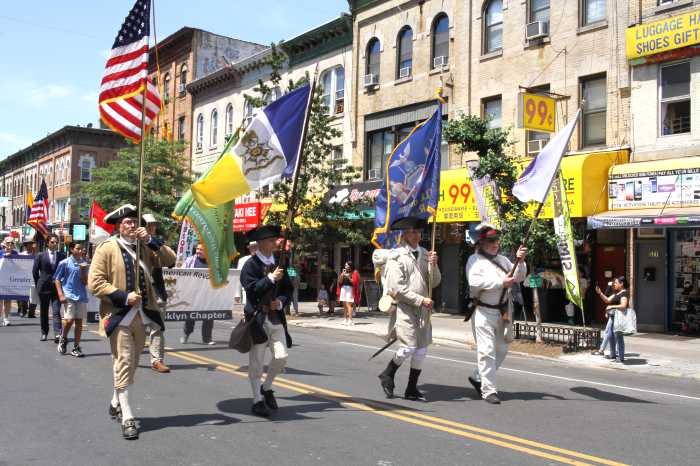The late, great British writer J. G. Ballard combined radical and conservative streaks, although he moved farther to the left with age. His 1975 novel “High-Rise,” now adapted into a film by director Ben Wheatley, imagines the dregs of ‘60s hedonism mixing with the rigidity of the English class system to bring the residents of a new apartment tower to their knees.
Ballard’s vision has a parallel in David Cronenberg’s first mainstream film, “Shivers.” Made around the same time, “Shivers” imagines a sexually transmitted parasite having a similarly pleasurably destructive effect on an apartment building. Maybe it was inevitable that Cronenberg would eventually adapt Ballard, as he did with 1996’s “Crash.” As Anthology Film Archives’ tribute to Ballard and his influence on cinema shows, relatively few filmmakers have filmed his novels directly — strangely, one of them is Steven Spielberg — but many have lifted from his imagery of abandoned cities and crashed cars.
Dr. Robert Laing (Tom Hiddleston) moves into a new apartment, in a building designed by Mr. Royal (Jeremy Irons). (His name is probably intended to refer to anti-psychiatrist R.D. Laing, whose theories about the subversive potential of schizophrenia were fashionable in the ‘60s.) He meets some of his neighbors, including documentarian Richard Wilder (Luke Evans) and single mother Charlotte (Sienna Miller). While the building seems luxurious at first, with nightly parties that grow increasingly debauched, it’s subject to constant bickering between neighbors, power outages, and shortages at the in-house supermarket.
Britain’s ‘70s class system — and more — collapse in a single residential tower
The structure of the building duplicates the class castes of the UK, with Mr. Royal living in the penthouse and the poorest people dwelling near the ground. One of Laing’s students commits suicide by falling from the 39th floor, and no one comes to investigate. Wilder decides to make a documentary about the building and its architect, just as it really starts to succumb to chaos.
In 1975, Ballard’s “High-Rise” critiqued the failures of Britain’s attempt at democratic socialism to cage the brutalities of human nature. Wheatley’s “High-Rise” seems to be set around the time the book was published. Men are decked out with unflattering mustaches and sideburns, two cover versions of ABBA’s “S.O.S.” are heard (one by a string quartet, the other by Portishead), and TV sets and cars look old-fashioned. There are also no people of color, a choice that made me wonder if Wheatley felt the film would be accused of racism if they acted as badly as the white people who populate it. London has become too gentrified for the grungy feel Wheatley aimed at, so the film was actually shot in still-crumbling Belfast.
“High-Rise” combines glee and outrage. Its second half is one long slide into oblivion, but the film, which includes a voice-over that draws heavily on Ballard’s novel, hints that a new order may be coming into being. Ballard claimed that his novel about car-crash fetishists, “Crash,” was intended as a cautionary tale about the dangers of technology, but I doubt he could have written 200 pages about sex and collisions while feeling nothing but complete disgust. Ballard, Cronenberg, and Wheatley are all essentially pessimists, but their work contains a trace of hope. In “High-Rise,” the overthrow of the class system leads not to Scandinavian-style social democracy but to rape and dog-eating. Still, it seems like a necessary step.
Wheatley films his tower as if it were a beautiful woman. Helicopter shots caress it from the outside. Seen on the inside, it’s a far less attractive building, but the inhabitants find no reason to leave. Laing, who seems more rational than most of them, winds up in a fugue state, covered in blue paint and wandering the halls in search of new patients. Endless sex takes place in the apartments; after a while, one stops wondering who’s cheating on whom or if it’s consensual. The building itself seems to act like a drug. Wheatley and screenwriter Amy Jump, who edited the film together, rely on disorienting match-cuts and funhouse-mirror images of Laing in the elevator. There’s lots of nudity, both male and female, but Hiddleston is the film’s prime sex object.
Ballard was a big influence on British post-punk; songs like the Normal’s “Warm Leatherette” and Joy Division’s “Atrocity Exhibition” pay explicit homage to his work. In one sense, Wheatley’s “High-Rise” is the ultimate post-punk film, culminating with a speech by Margaret Thatcher and the Fall’s “Industrial Estate.” Here’s the 1970s’ future, which became our present, it seems to say: a void into which Thatcher stepped. But it’s unimaginative to see contemporary England as the only place Ballard dreamed up. The sequels to “High-Rise” took place in the Superdome in New Orleans after Katrina and in Iraq after Saddam Hussein was overthrown. Like “Crash,” which predicted the way the Internet would entangle technology and sex, “High-Rise” isn’t science fiction.
HIGH-RISE | Directed by Ben Wheatley | Magnet Films | Opens May 13 | Landmark Sunshine, 143 E. Houston St.,btwn. First & Second Aves. | landmarktheatres.com | Film Society of Lincoln Center, 144 W. 65th St. | filmlinc.org



































